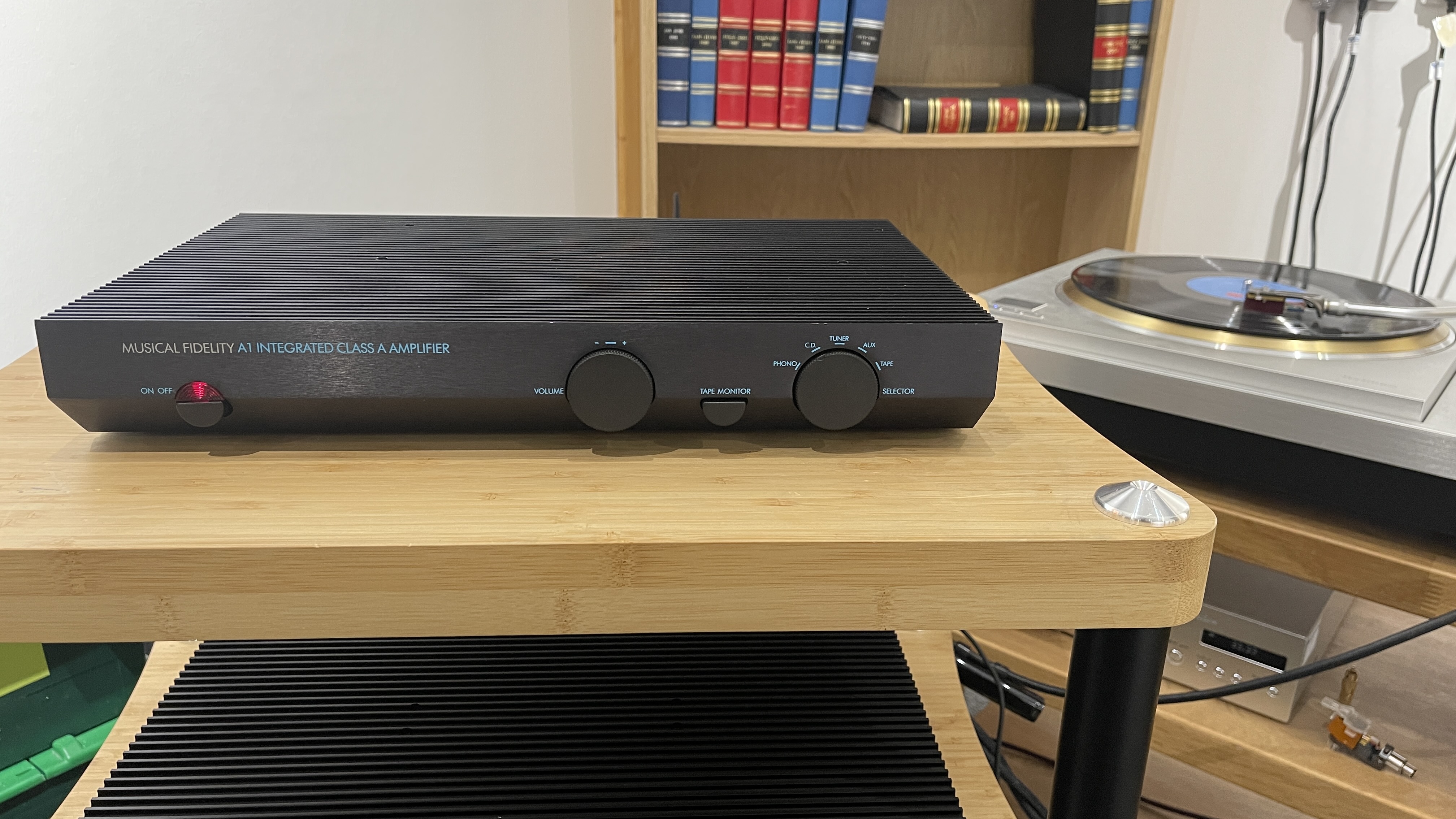
The A1 was not Musical Fidelity's first amplifier. In fact, the A1 followed a preamp, power amp and a premium-priced integrated. But its introduction in 1985 was instrumental in establishing the Musical Fidelity brand as a serious force in the market.
It carried a £189 price tag on release, and its natural rivals were the likes of the Cyrus Two and Nait 1. The A1 stood apart from both those excellent designs because of its Class A-biased circuitry and wonderfully distinctive casework. Being different is all very well, but there was real substance here too, thanks to a sound character that offered things nothing else at the price could emulate.
The A1’s circuit was designed by Tim de Paravicini, a legendary audio engineer who was best known for his valve amplifier designs and custom work in the recording industry. On a side note, Paravicini also founded the high-end EAR Yoshino brand.
The decision to make the A1 a Class A design influenced everything that came afterwards. On paper, Class A operation is optimal for sound quality thanks to the minimal distortion it produces. The reason that the vast majority of high-quality amplifiers don’t use it though, is that it has issues with high power consumption and generates lots of heat.
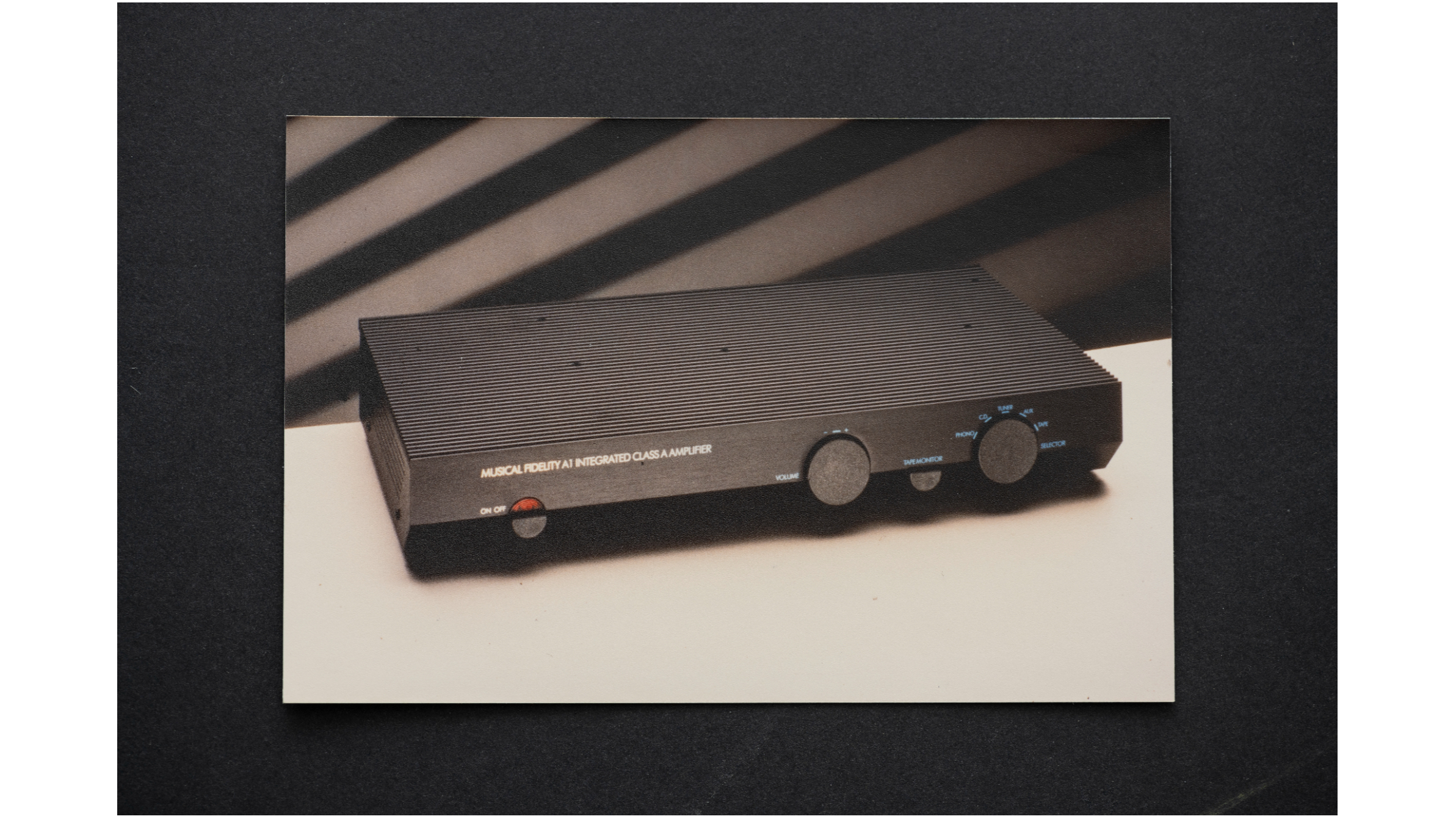
The need to dissipate that heat is what resulted in the A1’s iconic look, where the entire top panel is essentially the main heatsink for the output devices. How much heat does an original A1 produce? Even with the huge heatsink area this 25 watts per channel amplifier’s casework gets hot enough so that it is hard to touch it for more than a few seconds. That’s even when the surrounding temperature is a nice and steady 20-degrees centigrade. The situation would be even less palatable in warmer climates.
Aside from user comfort, the sheer heat produced by the A1 also presented difficulties for the internal circuitry. Generally speaking, heat is not a friend to electronic components, so great care has to be taken to specify components that can cope with the kind of internal temperatures that exist inside such hot casework. In those early years, Musical Fidelity didn’t leave a lot of leeway, using capacitors that were rated for 85 degrees rather than the alternative 105 degrees, leading to some reliability issues. Some early samples of the A1 work to this day, so it wasn’t a disaster, but there were enough failures to taint the A1’s reputation just a bit.
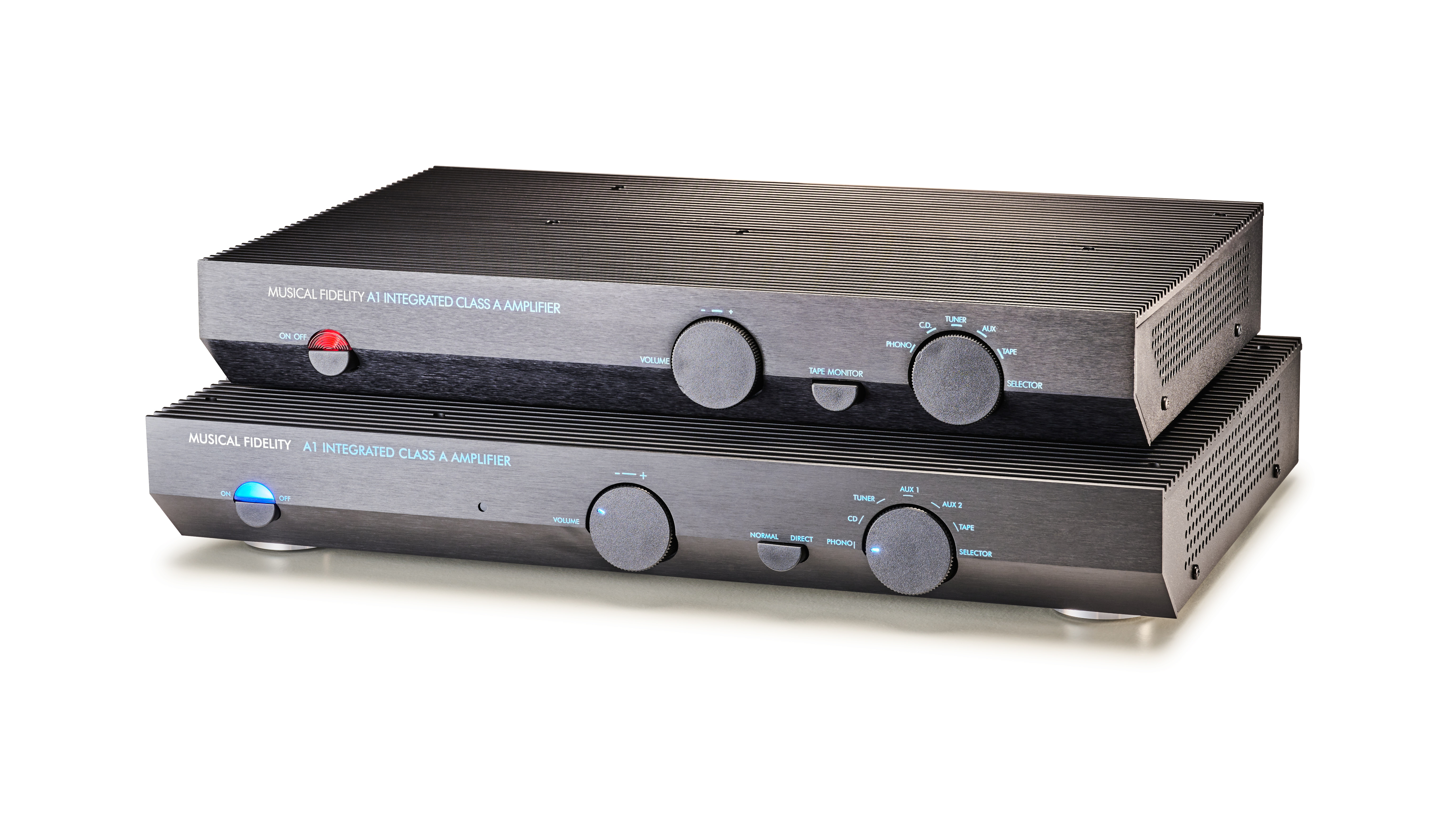
Yet this little amp looked and sounded so good that it still sold by the truckload. That first model proved successful enough both commercially and critically that MF expanded the A1 stable to include pricier integrateds, pre/powers and monoblocs. There was even another range of amplifiers that echoed the A1 styling, but ditched the Class A circuitry, so heat output wasn’t even an issue. Good as they were, those designs lacked the A1’s sonic magic, though.
Magic isn't a word we use lightly. Take a listen to an original A1 today and it is easy to understand why so many fell under its spell. Our serviced 1985 sample has been supplied by Musical Fidelity and is in great condition.
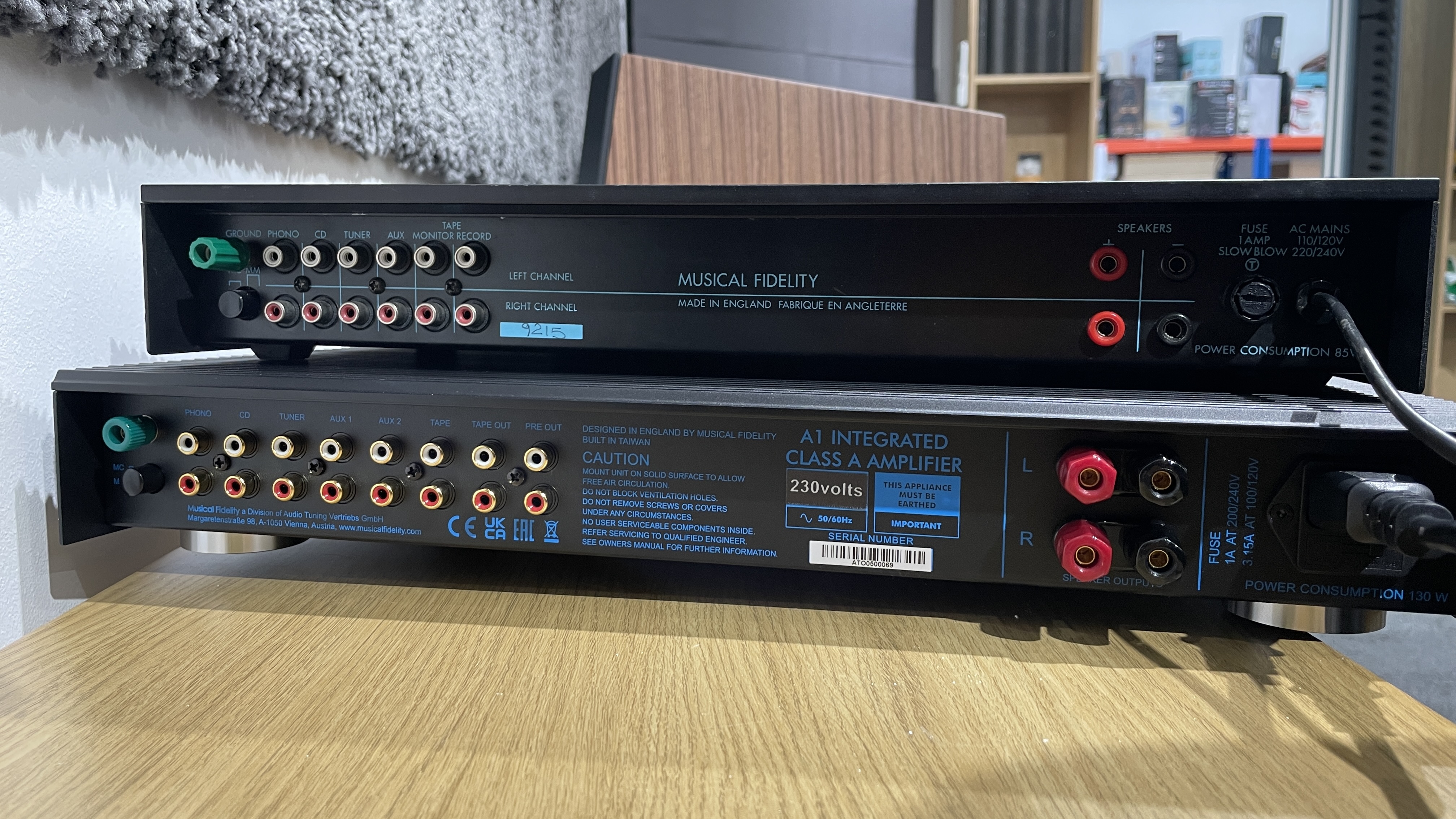
There isn’t a remote control, of course. Such things were rare at that time, so you have to be totally hands-on with this product. We leave our sample powered up for around half an hour before we start listening and find out all about the downsides to A1 ownership. This thing really does get hot, reminding us of a small central heating radiator on full power. The temperature of the top panel is so uncomfortable that we find ourselves actively avoiding contact when we change the volume or switch inputs. Both of those rotary dials and the front panel in general feel notably cooler than that finned top panel.
The controls themselves have a nice action though. The input selector works with a pleasantly positive clunk and the front panel buttons have a pleasant solidity to them.
We love the amplifier’s styling. Back in the Eighties there really was nothing else on the market that looked like this, and that remains the case even today. Our original A1 still feels well-made and nicely finished. Back when it was new, it would have seemed light years ahead of most of its rivals, many of which still had a ‘made in a shed’ feel about them.
A power output of 25 watts per channel wasn’t a lot, even back then, so it pays to put a bit of thought into the partnering speakers. High-sensitivity should be a priority, if you play at loud volumes or have a larger space to fill. Even then we still don’t think the A1 would be an ideal choice in such a context. But, in more modest spaces and at more reasonable levels, we think this amplifier will satisfy most requirements.
In our time with the A1 we use a wide range of speakers from the Bowers & Wilkins 606 S2 Anniversary Edition to KEF LS50 Meta and a pair of Fyne Audio Vintage Classic X floorstanders. The Fynes may not seem like suitable partners, given that they cost £6499 / $11,000 / AU$16,995, but their unusually high 94dB/W/m sensitivity and expressive nature make them an excellent though atypical foil for the A1.
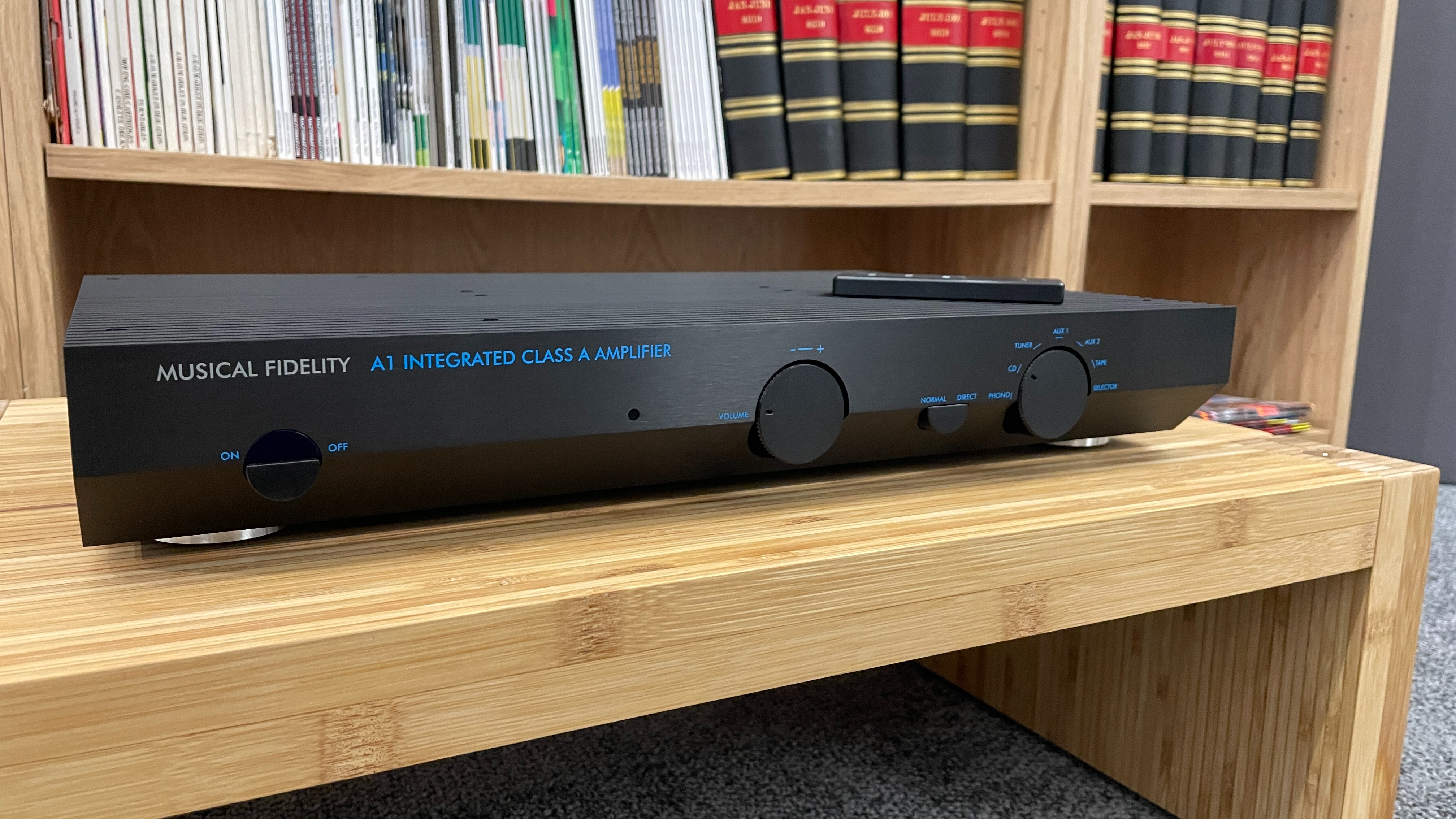
The original A1 turns in an utterly charming performance once up and running. Let’s get the negatives out of the way first. It isn’t the most neutral of amplfiers, having a determinedly smooth, full-bodied balance that is likeable but not particularly accurate. Detail levels are broadly on a par with a decent budget amplifier of today, so nothing special, and the bass, while weighty, is also pretty soft and lacks grip.
Yet it remains a pleasure to listen to. There is a surprising amount of substance to the sound which gives instruments and voices a physical presence that most amplifiers, be they budget or mid-priced, still lack today. We love the A1’s fluidity as it tracks dynamic shifts, and the delicate way it renders low-level nuances. Some reviews of the time suggested that it sounded a lot like a valve amplifier, and we can understand those sentiments.
The A1 delivers a large-scale sound; its presentation is bold and confident enough to overshadow any of its sonic shortcomings for the right person. We love its coherence and its ability to present music as an experience to be savoured rather than as an exercise in analysis. This is as true of the built-in moving magnet/moving coil phono stage as it is of the line inputs.
Don’t forget that in the ’80s, vinyl replay was still king. While it is true that CD was building momentum, we hadn’t yet got to the point where most enthusiasts had turned to the silver disc, so any amplifier with pretentions to greatness was always going to need a good phono stage.
The switchable MM/MC phono circuit fitted to the A1 is certainly that. It isn't too noisy and retains the hugely appealing character of the line stages. We’re happier with how it sounds with our Goldring 2500 and Vertere Sabre moving magnet cartridges rather than the Ortofon Quintet Blue and Kiseki Purpleheart moving coils – but either way we get enjoyable results.
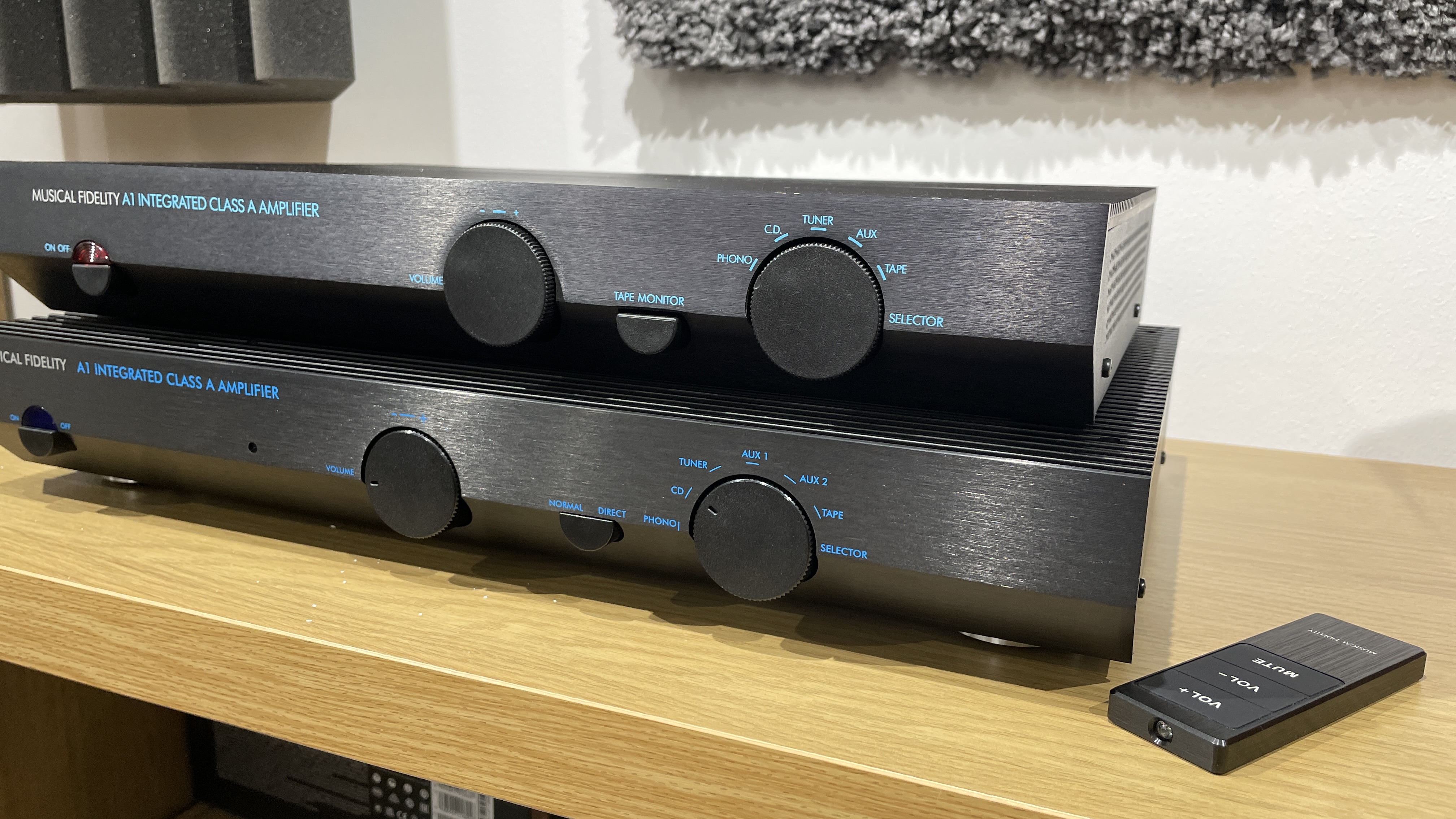
We are lucky enough to have a sample of Musical Fidelity’s new A1 amplifier on hand too. The company has tried to keep as close to the original design as possible given the tighter legal requirements in force today, but has still taken the chance to improve things where possible.
The new one’s casework is a little larger to give more heatsink area and the internal heat management is better thought-out. Some of the circuit's components are uprated to improve sound and are now specified to resist the ill effects of heat, while the power supply arrangement for the two power amplifier channels is more generous. Factor in an improved layout for the phono stage section and you have what is a carefully considered resurrection of the A1 that makes things notably better without diluting any of the original’s sonic character. It adds a remote control too, only for the volume level and mute, but it is welcome. The handset is a simple, nice-to-hold metal-cased unit that feels good to use.
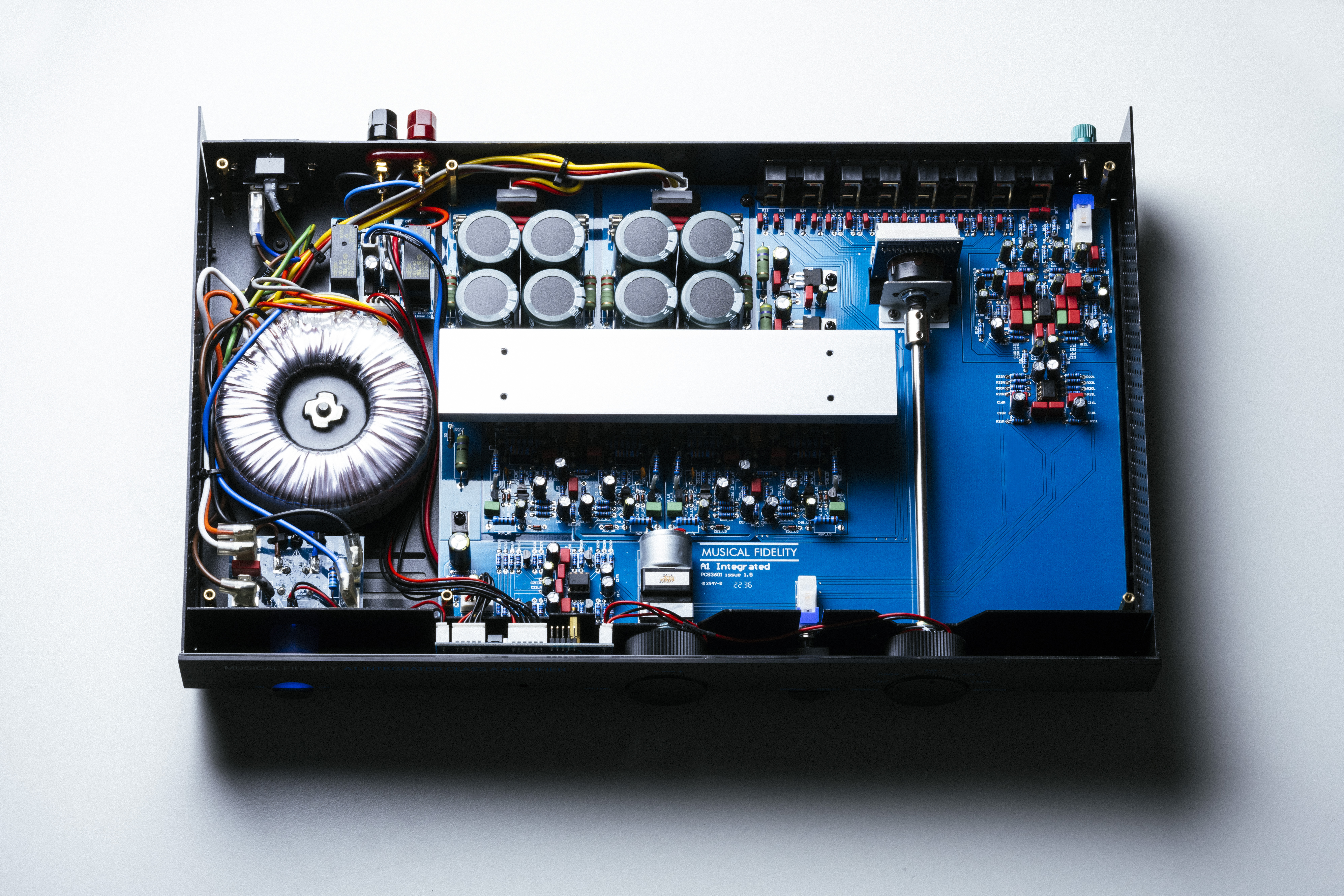
Listen to the two generations side by side and you will find that Musical Fidelity has succeeded in improving an already great product. The current version sounds considerably cleaner and clearer than the original. Its bass is tauter and more tuneful without sacrificing anything in terms of weight and authority. The stereo imaging has improved too, with the amplifier now sounding even larger-scale and more spacious in how it presents a soundstage. Yet, all the original’s charm remains undimmed. This is still an organic and musical amplifier that makes us want to play more music.
In our view, the A1 rightly deserves its classic status. If you are feeling a little brave you can still pick up an early one for not much money. It will likely give you plenty of enjoyment provided you are willing to put up with its quirks. But, we admit we would be more partial to the new one.
It loses nothing to the original in terms of character but clearly performs to a higher standard, runs a touch cooler (though still very hot) and has a remote control. It allows you to enjoy everything about the classic product but with all the benefits of a new-build and official service backup. We’ve got to say, we’re tempted.
MORE:
Read our new Musical Fidelity A1 review
We speak to the Musical Fidelity designer behind the resurrected A1 amp
Musical Fidelity unveils two new loudspeakers based on the BBC’s original designs
Naim's purist approach to the Nait 50 is a breath of fresh air for hi-fi







